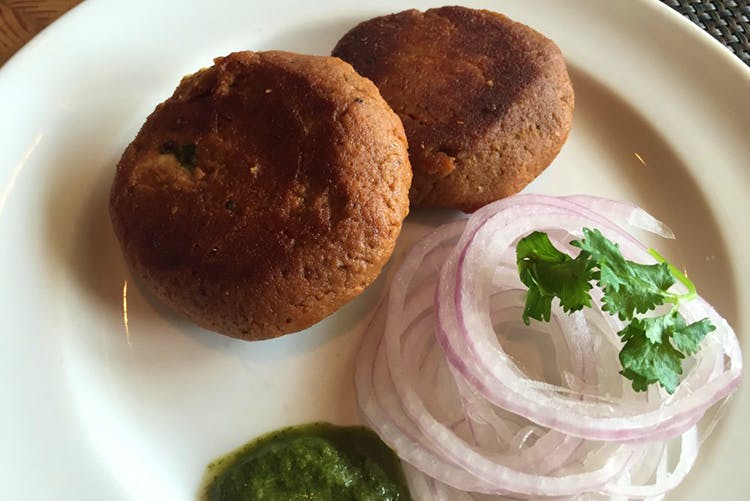Most red meat eaters thrive on the texture of the stuff. So it is inexplicable that Lucknow’s gourmets have invented kebabs so soft that they could give a vegetable a complex. The galouti and the kakori have both originated in Lucknow. In my ignorance, I thought that they were both largely the same, until a visit to Bangalore’s newest hotel, Vivanta by Taj, disabused me of my half-baked ideas.
I had the privilege of having a meal cooked by none other than Chef Anwar Ali Ansari, son of the legendary Ghulam Rasool, a contemporary of Imtiaz Qureshi. In his heyday, Ghulam Rasoon worked for the Taj. Quite a lot of the spectacular meal was nouvelle Indian. However, Chef Ansari’s kormas and kebabs bristled with authenticity. The single most outstanding feature of the entire meal was the galouti, which is when I asked him whether galouti mince could be used for the kakori and vice versa.
For the fraction of a second, he looked shell-shocked. After all, to be asked such a profoundly ignorant question couldn’t be a regular occurrence for him. When he had regained his composure, he pointed out the differences between the two. The galouti is a street food. At least, it is in Lucknow. Galoutis are made of mince, taken from the leg of a lamb that has been through the grinder three times. The defining factor of a galouti is the fact that it has to be smoked. You fill a small cup with a lighted charcoal, a drop of ghee {clarified butter} and a clove, add it to the spiced mince and cover it with a close-fitting lid. In a few minutes, the smoke will perfume the mince. Too little smoking and you may as well not have bothered; too much and the dish will be inedible.
Potli masala, and garam masala, the recipes for which are closely guarded secrets anyway, constitute the spicing, besides saffron, brown onions, ginger and garlic. Galoutis are formed into patties and roasted on a tawa.
On the other hand, kakori kebabs are an occasional treat, being much richer. Traditionally, they used to be made by specialist caterers on special occasions and were never considered street food. Every kilo of lamb {taken from the thigh} has to have 200 grams of kidney fat. It goes into the grinder no fewer than six times, and contains cardamom, saffron, onions, roasted chana powder, cashew paste, rose petals, cloves and khus-khus. They are grilled on an open charcoal fire on skewers.
When Ghulam Rasool first worked in a commercial kitchen, it was the norm for an apprentice to grind the mince for kakori kebabs on a silbhatta. It took eight hours for two assistants to get through ten kilograms of mince! This means that Kashmir’s ristas and gushtabas are about the only meats to be processed by hand in this day and age.
It says something for the street food of Lucknow that it makes its appearance in sophisticated menus around the country.
This post was originally published on marryamhreshii.com here.

